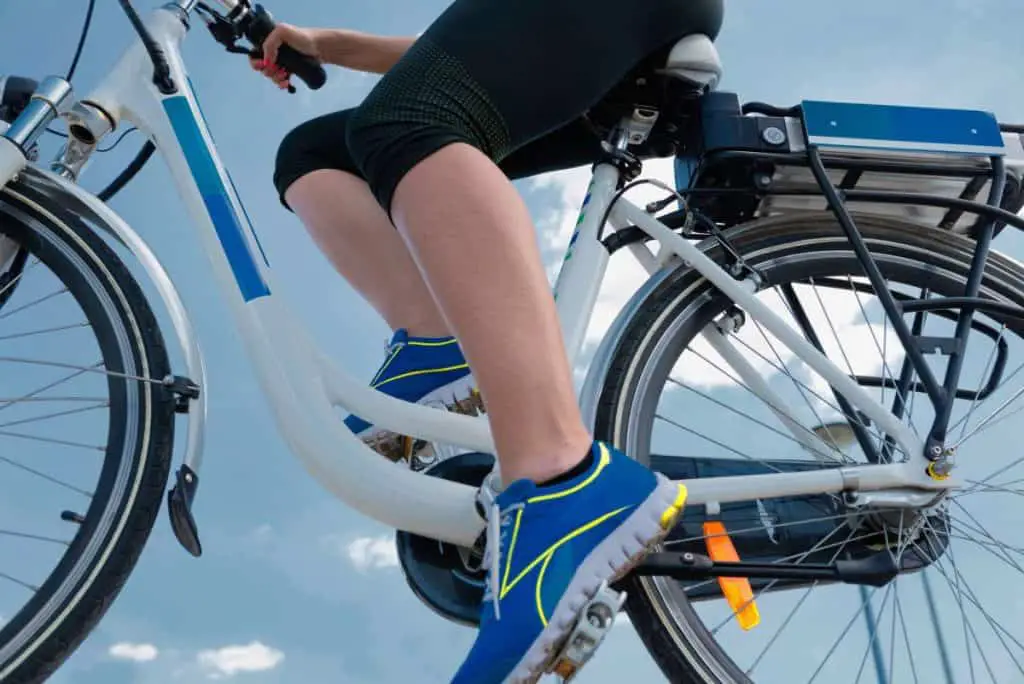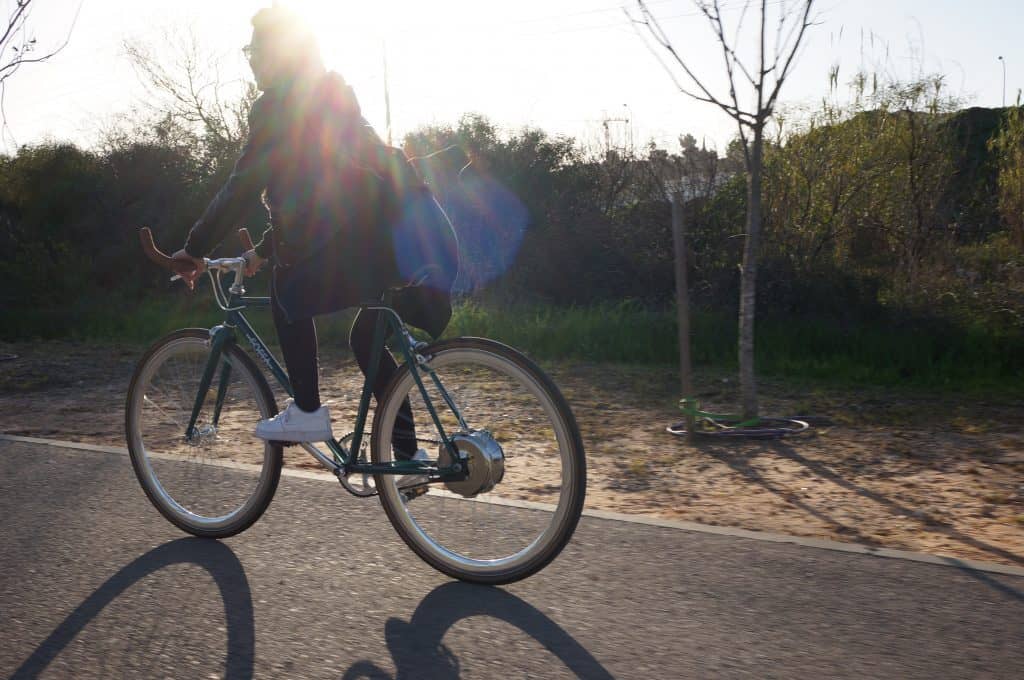Last Updated on January 9, 2023 by Igor Karni

Riding your e-bike might become a cause of concern when one is dealing with health issues, particularly when it comes to undergoing surgeries like a hip replacement. With a high percentage of e-bike riders in the 50+ age range, the question often comes up: can you go back to riding your e-bike after a hip replacement?
You generally can ride your e-bike after a hip replacement surgery if you have carefully followed the advice of your physician, the guidelines of physiotherapy, recovery time. You also need to start your e-bike rides slowly, as some of the muscles would have lost their strength.
A hip replacement is when your hip joint is replaced by a prosthetic implant (Wikipedia link). Typically, those who are affected by arthritis or hip injury are the ones to undergo hip replacement surgery. Hip replacement surgery is major surgery, and the recovery time can range anywhere between six to twelve weeks (sometimes longer if there are complications).
This does not mean, though, that you’re unable to do your regular physical activity once you are recovered. In fact, it’s quite the opposite: physical activity is encouraged, and many patients of hip replacement surgery have been able to go back to riding their e-bikes with little to no issue.
This article outlines the various factors to keep in mind after your hip replacement surgery, including the importance of physiotherapy, recovery time, and why e-bikes are among the top preferred and safe methods of exercise for those who have had hip replacements.
Consult your physician and complete your rehab
The most important thing to remember before engaging in any physical activity after your hip replacement surgery is to consult your physician. This is because recovery time varies on a case-by-case basis, meaning that your recovery period may differ from others’ according to your situation.
Your doctor, surgeon, physiotherapist and any other medical practitioner involved in your hip replacement process know best. Listen to their instructions and keep on top of your appointments to ensure a speedy and full recovery.
It is also important to be aware of all the risks associated with a hip replacement before you begin riding your e-Bike. Safety is the most important thing to consider before riding an e-bike, and that includes understanding what your own limitations might be.
Read also: Are electric bikes dangerous? What are e-bike risks? And, How safe are electric bikes?
Even if you’re feeling fine or up to e-Bike riding, you should always consult your physician before you start. They should give you the green light before you start riding, in order to minimize any risk of complication. Many e-bike riders that have undergone the surgery have stated that recovery time varies between three to twelve weeks, but this is also dependent on whether you have received a single or double hip replacement. Double hip (or, full hip) replacement requires more time to heal.

It is imperative to first complete your rehabilitation and physiotherapy process before moving on to other physical activities. This process is the most crucial element of your recovery after surgery, as it focuses on your hip mobility, flexibility, and range of motion.
All these factors will play a huge role in getting you back to riding your e-Bike safely. Do not get back on your e-Bike within the first three to six weeks at least, as you will need that time to focus predominantly on physiotherapy and rehab.
One good rule of thumb is that you should not consider riding your e-bike again until you are able to start walking again.
Read also: How to prevent and cure back pain when riding an e-bike? And, How to prevent and cure knee pain when riding an e-bike?
Suggestions for smooth e-Bike riding include using cadence sensors (link to Amazon) to keep your speed even, as opposed to torque sensors, which can cause surging.
It may be frustrating to wait, especially if you are an avid rider, but be patient. Your recovery is the most important thing and focusing on your recovery immediately will result in a better long-term impact. The sooner you become active through physio and rehab, the better it is for you and your body, and the sooner you can get back to e-Bike riding.
Tips to remember before riding an e-bike
Wear hip pads and mountain bike shorts
Once you do get back into riding, there are a few cautions you should observe. Some suggest wearing hip pads (Amazon link for women, for men) and mountain bike (MTB) shorts on your operated hip (Amazon link for women, for men). This will provide extra protection in the instance of falls.
Consider pre-habbing
You may lose some muscle mass during the time of your recovery, especially if you are used to doing a lot of physical activity prior to your surgery, which is why physiotherapy is so important in the process.
Some patients even undergo physiotherapy before surgery (colloquially known as “pre-habbing”) – consult your physician if you want to consider this. A post-operation physio will help you retain your range of motion and muscle mass, as well as let your body more quickly accustom itself to your new hip.
Push yourself only in short increments
After your hip replacement surgery, remember that your balance may be slightly off-kilter. While this will be a focus in physiotherapy, it’s important to remember not to push yourself too much when you start to ride your e-Bike again.
Patients have recommended to only push yourself in short increments and to listen to your body, and slowly build back up to the tolerance you once had as opposed to doing it all at once. Being mobile is important but be sure to prioritize your body’s recovery above all else. If you need to take more breaks or go shorter distances than before when riding your e-Bike, allow yourself that.

Try with a stationary bicycle first
One popular suggestion regarding the road to recovery is to first ride a stationary bicycle to practice the movement before getting back on your e-Bike. This way, your body will become accustomed to this motion, and is a wonderful way to ease back into physical activity without putting too much pressure on your new hip.
By the time you get back on your e-bike, your body will have some familiarity with the riding motion and this will make riding your e-bike again that much easier.
Read also: Guidance for riding an e-bike with certain health conditions. And, Most common e-bike riding pains and how to avoid them.
Going steps-by-step is the best
According to the American Academy of Orthopaedic Surgeons (source), there are a few tips to remember.
First, when you begin to ride your e-Bike, try riding on a level surface (not too many hills, bumpy roads or other uneven surfaces).
Second, it is suggested not to bring your knee higher up than your hip – this means that you should adjust your saddle height to ensure that it’s not too low or high, making it easy for you to mount and dismount your e-Bike.
Third, keep your back is as straight as possible, adjusting your handlebars as necessary to avoid curving your spine, as curving will put pressure on your hips and may cause disbalance.
Last, make sure that your feet are facing as much forward as possible to ensure balance – you don’t want to be twisting or bending too much, or placing too much strain on your hips.
The Academy also suggests using a turbo trainer, a raised platform for mounting and dismounting, and keeping riding time to between ten to fifteen minutes when starting out.
Read also: What are the risks of riding an e-bike for a senior rider? And, How to select the right e-bike for a senior rider?
The advantages of using e-bikes as compared to other sports
Riding an electric bicycle provides the perfect balance for you after hip replacement surgery. This is because you can strengthen your muscles and increase your mobility without putting too much strain on your joints while riding an e-bike.
E-Bikes are much easier to ride and use than many other vehicles due to the pedal-assist and electric power, and are more comfortable and require less physical intensity and focus on balance than vehicles like traditional bicycles. Stopping, starting, and accelerating is made easier because of these elements, meaning that less manpower is needed when riding an e-bike.
Easy Tip: Ultimately, one should remember that balance is key.
While it’s great to get exercise in, and in fact is imperative to your recovery to be active as it decreases swelling, you don’t want to go overboard. E-Bikes allow this balance as you can adjust the amount of assistance needed. Start off with the easiest gear, and if you feel you want to adjust gear as you continue riding your e-Bike, slowly increase to higher resistance gears as you see fit.
Remember that there is always a risk of injury when riding an e-Bike, just as there is when doing any physical activity. Be aware of the risks and consult your physician if you have any concerns about the amount of time you spend on your e-Bike.
You should be able to get back to riding your e-Bike with little to no problems if you follow the rules accordingly. Remember to attend all your post-operation appointments, consistently follow your physiotherapy and rehab exercises, and don’t overdo it with the exercise.
Read also: Ever considered offering e-bike as a gift? Or gifting one to yourself? Check out our suggestions – in this e-bike gift guide.
Slow and steady wins the race when you’re recovering from your hip replacement, and before you know it, you’ll be back to riding your e-Bike with ease!
Igor is a sustainable mobility and green energy advocate. His mission for Easy E-biking is to help make electric cycling simple, practical, and fun. Follow him on Facebook and LinkedIn.





